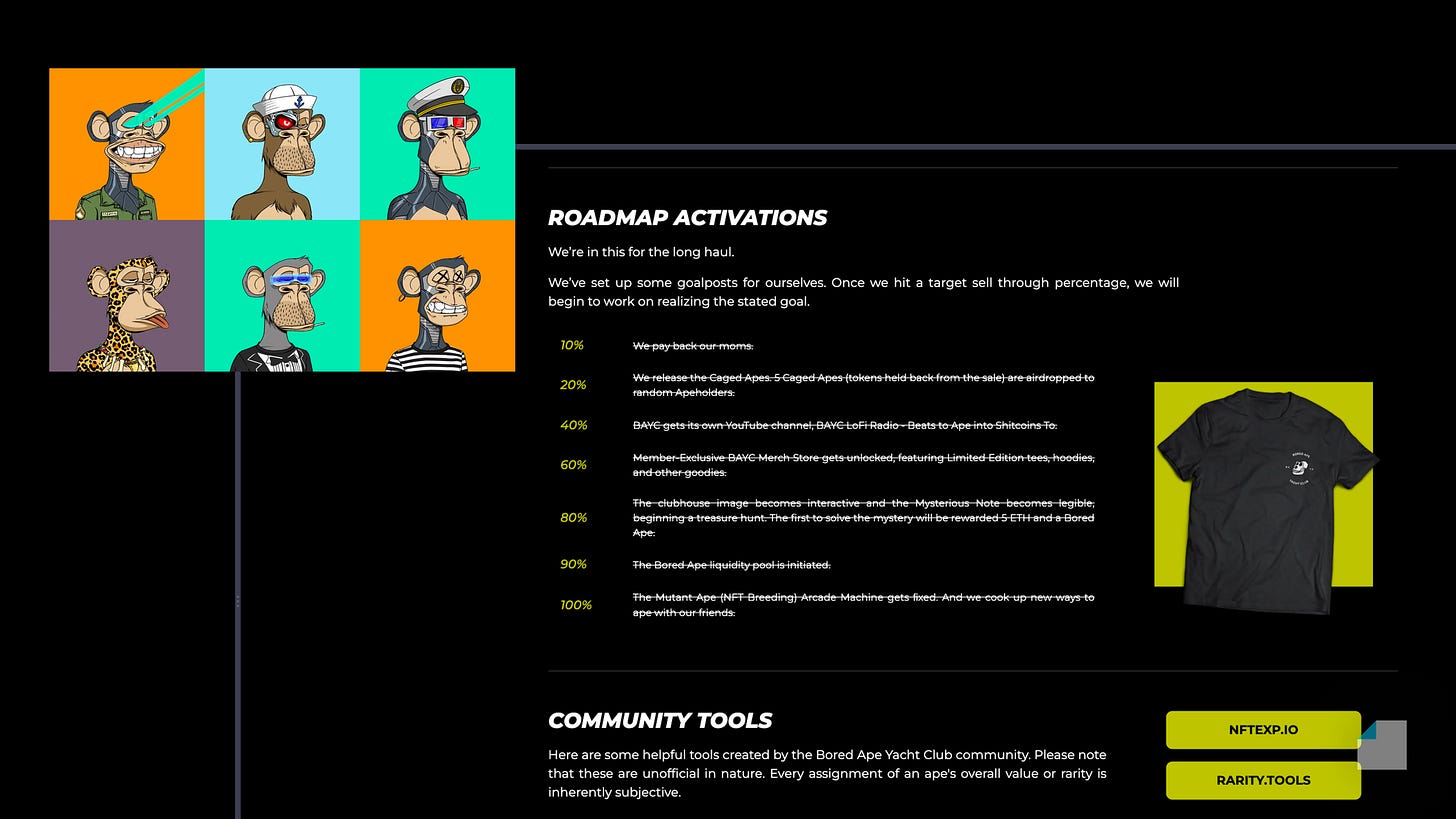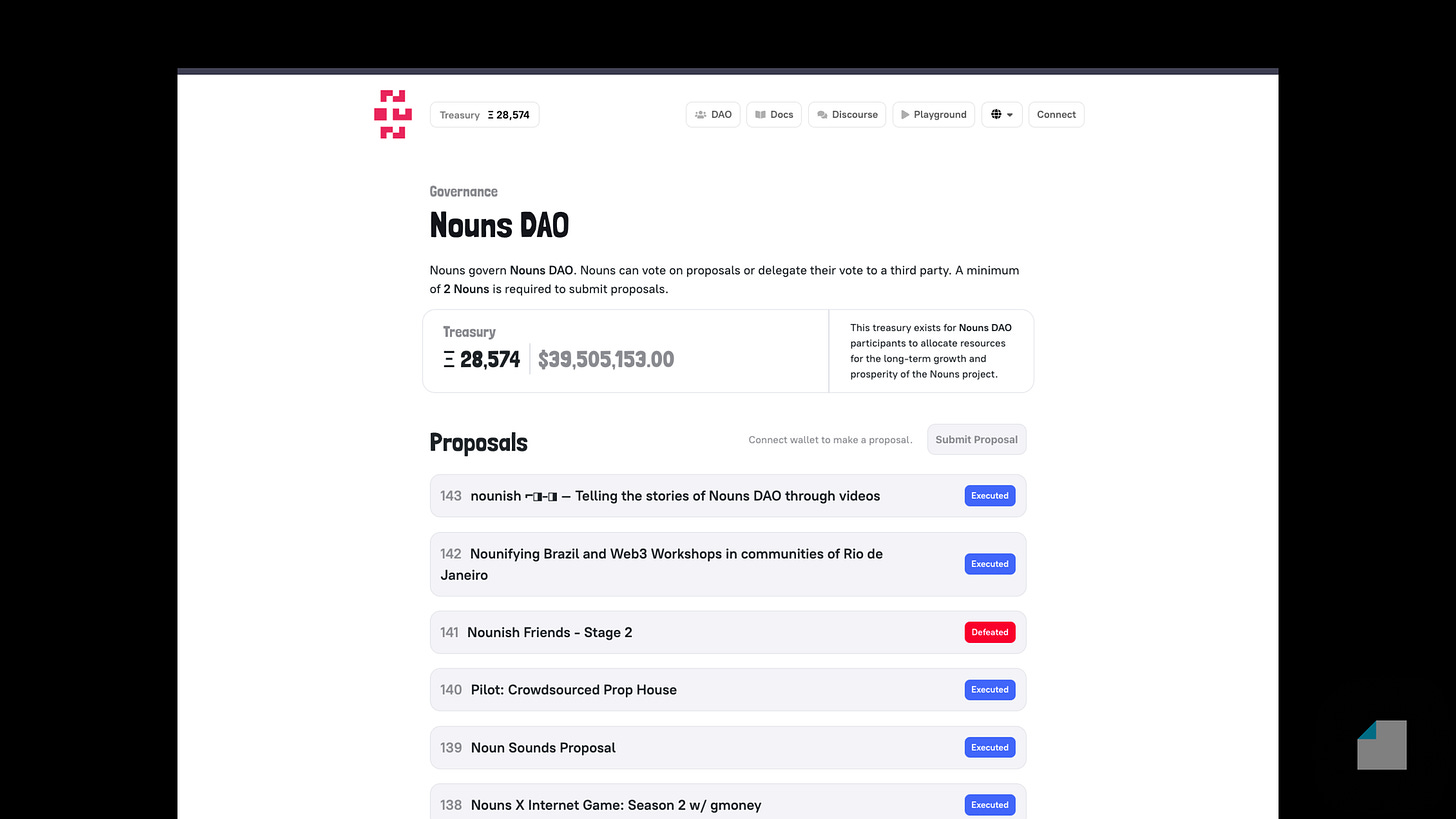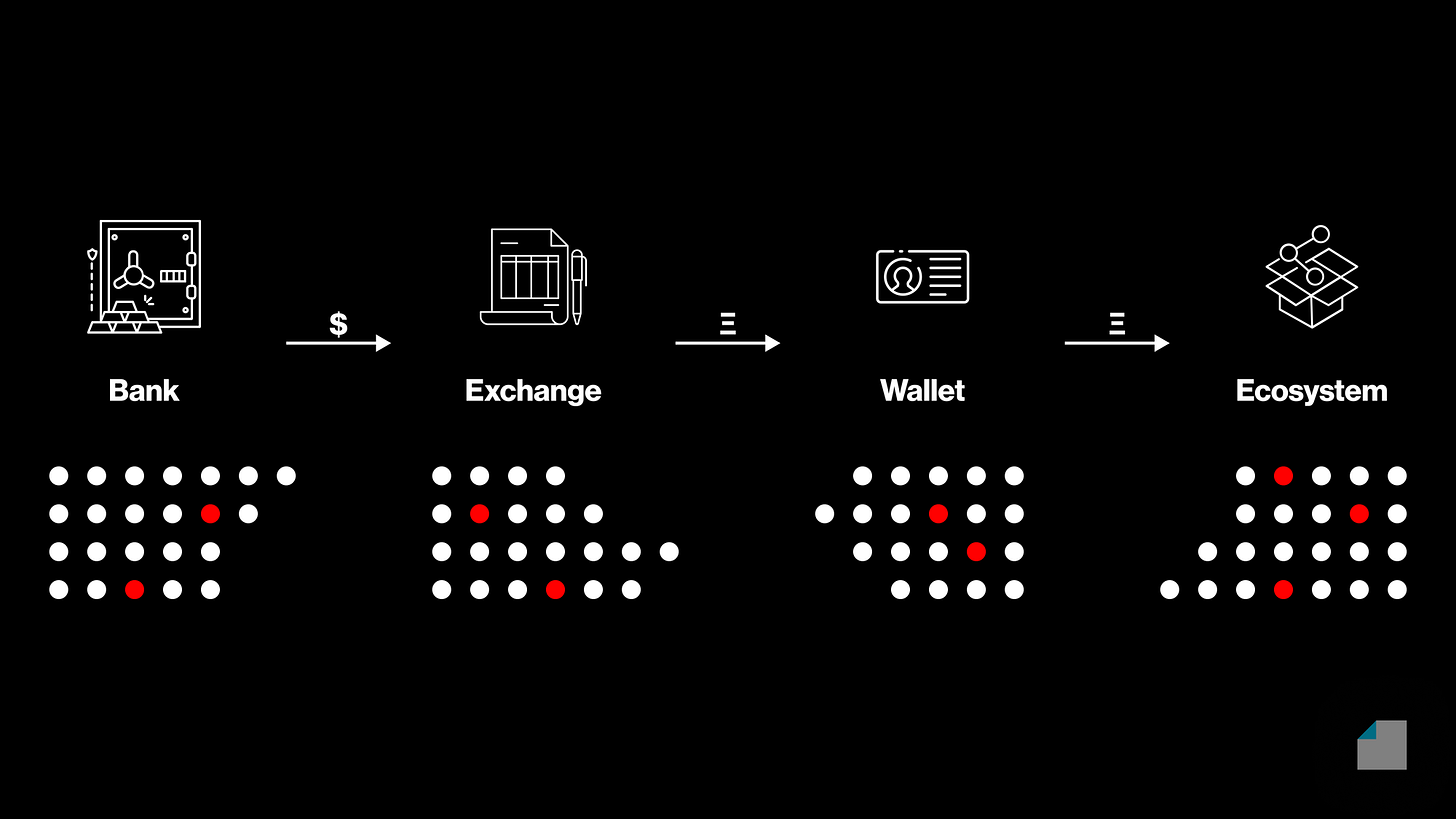The UX Designer's Guide to NFTs
A sober look at the technology, culture, and use cases of NFTs
It seems that we have moved on from the massive hype around NFTs. We're ready to have a sober look at them from a UX design perspective.
The NFT phenomenon reveals timeless and practical insights in culture, technology, and economics that we can leverage for all kinds of design work. Because of how they build on timeless human rituals, we believe that NFTs are here to stay, and ripe with fantastic opportunities for UX design.
The "UX design perspective" means two things: First, to build empathy with the people involved, their culture, experiences, desires, and needs. And to know our way around the designs, flows, journeys, and artifacts we build. In this guide, we'll use examples of actual designs and products out there, to see things with our own eyes, and to understand the human side. You'll see how many NFT projects are obviously analogous to things that people have been doing for years. The technology is new, but the culture is timeless.
What UX Design Knows, Believes & Feels about NFTs
In the course of our research and public speaking about NFTs, we spoke to many UX designers to cater their needs. Here's what we found out:
The majority of UX designers we met online and in Europe said they couldn't describe what an NFT is with confidence and precision. The basic concepts were missing.
The majority were curious about use cases, other than digital art. They heard that NFTs are used in video games, fashion, legal documents... But they weren't convinced.
Everyone knew NFTs are an emerging technology that hasn't crossed the chasm into mass adoption, and they were curious about how it might happen.
A vocal minority believed NFTs are a fad that's bad for the environment and bad for the economy. Convinced that NFTs will be extinct, they would rather have it sooner than later.
This tells us how early in the game we are, with rich opportunities for UX designers to create value with NFTs. The lion's share of value in this ecosystem is created through design and creative work – someone has to make the JPEGs! But a grasp of the technology among designers is still rare. What if we could all have NFTs in our toolbox and reach for them when it's best?

What even is an NFT?
The NFT is an impressive but simple technology designed for keeping records.
Think of it as an entry in a database – perhaps a line in your Excel sheet. What makes it special is that it's written in a database called a blockchain.
A traditional database serves information from a central place. There is only one copy of your data. If you want to see my Instagram photos, you can go to Instagram and have a look. If I decide to take them down, you'll never see them again. This is a great feature for private files, but not so for keeping public records in the long term.

The innovation of the blockchain is to let anyone create backups of it. There can be as many copies of a blockchain database as you like, maintained by people wherever. This way, the data is available indefinitely, as long as there are people running blockchain nodes.
This was actually a hard computer science problem: imagine a Dropbox folder you share with everyone who has Dropbox, or a Google Sheet shared between everyone with an account. But we figured it out. And it's important to know that we had a reason.
This was the first thing we wrote in the first blockchain:
The Times 03/Jan/2009
Chancellor on brink of second bailout for banksThe blockchain was invented as a critique of the financial system. We spoke to the state and banks: “Why should you be in charge of our livelihoods?” We invented the blockchain as an instrument of democracy and peace, to improve on capitalism and nationalism.
Are NFTs bad for the environment? Of course. Instead of having one database on one computer, now we have thousands of them consuming electricity. This is an engineering problem. And the blockchain community believes that engineering problems are solvable – most of them are developers whose job is to solve such problems every day! Case in point: this year's update to the Ethereum blockchain slashed its energy consumption by more than 99%.

But what about NFTs?
In blockchain-land, everyone has a "wallet" which identifies them. It represents who you are, just like your passport or ID card.
NFTs, which are always associated with a wallet, represent the things you own: the records of your house, the registration for your car, your diploma from school, licenses to books, music, movies that you can access and share with friends... These are all things we had before blockchains, and the NFT is simply a new technology for keeping such records.

The NFT is not a jpeg, or an artwork, or any kind of media file. It’s a document about something. You can think of an NFT as a "passport" for your artwork, car, or Cryptokitty.
The actual implementation of this, of course, is more complex. Blockchains are expensive (for now), so we write a lot of information in other databases too. But the ownership relation is on the blockchain, and secured very well.
Believe it or not, this is all we need to understand about this technology to start talking about use cases and UX design!
To explain how NFTs are useful, we'll look at some examples out there, analyzing the strategy and intentions behind them.

Digital Art
GMUNK is a well-known artist, director, photographer who does a lot of non-NFT work, selling prints and client commissions. He also sells NFTs. His work is one of many examples that illustrate why NFTs are so popular in the art world.
Looking at one of his NFTs on SuperRare, we see not only the artwork and its owner, but many details about the technical properties and story of the piece. The experience is comparable to having a museum label or brochure alongside the work. In fact, the digital format tells an even more compelling story with rich data and interactivity.
Yes, the artwork is just a JPEG – in the same way that a photo is just paper, and a painting is just some fabric. But the JPEG is made valuable by lore, just like how we experience value in the traditional art world.
What NFTs do for art is to bring gallery-levels of storytelling and craft to our computer screens, enriched with interactivity. They allow art to truly scale, not only by reproducing the art, but all of its documentation, in a compelling format.

PFPs and Game Items
The UX of collectables like profile pictures (PFPs) such as Cryptopunks, with traits like pipes, and hats, and glasses, are distinct from digital art.
From a cultural standpoint they are similar to game items, where Decentraland is a well-known example, with its marketplace for clothes, shoes, helmets, and moves for your in-game character.
Instead of going deep into the culture of communities around these digital collectables, I'd like to make my point by highlighting two other cultures that have been around for decades.

Magic: the Gathering is one of the most popular trading card games in the world, probably tied with Pokemon. There's a strong second-hand market for Magic cards, with the most valuable ones regularly changing hands for thousands of dollars. The rarest of them all, Black Lotus, once sold for over half a million.

Similar rituals, storytelling, and experience designs are a mainstay in fashion. Limited releases by coveted brands can sell out within minutes, and become extremely valuable in the secondary market. My favorite sneaker store where I live stocks a whole collection of Jordans going well above listing price.
This is the kind of design culture that NFTs represent – a digital incarnation of the experience designs we enjoy in fashion, card games, cars, watches, and more.
It only makes sense: We spend so many hours behind screens, speaking to each other as digital beings on Teams, Slack, Twitter, and elsewhere. A good webcam is the new makeup. NFTs are the new Rolex.

Tickets and Certificates
Tickets for concerts, parties, festivals and the like is an obvious use case. Ticketing as it is already is basically an ownership database. With NFTs, the technology layer of ticketing is open to all. Artists and event organizers can now build and innovate in their space with a common technology, and even develop experiences where different events and tickets interact.
Again, an example from my home town: you can buy a lifetime ticket to Gothenburg's Way Out West festival as an NFT. On the infrastructure level, projects like GET Protocol, SeatlabNFT, and Oveit provide the tools to build these experiences.
And entering an event is only the beginning of the experience. NFTs can be the digital infrastructure for rich experiences during and after events. POAP (Proof-of-Attendance Protocol) offers a collectables protocol to digitally record life experiences. Educational innovators ranging startups like Neol to Exeter University in the UK and Hoseo University in South Korea are experimenting with diplomas and certificates in NFT format.
I think it’s the perfect use case – until your phone dies at the festival. UX designers working on ticketing should take care to really consider failure modes and fallbacks.

Entertainment
The commercial success of Bored Ape Yacht Club (BAYC), one of the most popular NFT collections, is legendary. While technically a PFP project, a closer look at BAYC reveals excellent UX design, branding, marketing tactics, and gamification, to the point that I consider it an entertainment product.
Despite the project's immense success, few are familiar with the lore of Bored Apes: BAYC is a science fiction story. Set in 2031, BAYC is a club for crypto investors who “aped into crypto” a decade ago and got "rich beyond their wildest dreams." Now, these investors, having mutated into the Apes, are burdened with boredom, not knowing what to do with their wealth and free time. The solution: "hang out with other like-minded apes" at the yacht club.
As BAYC kept selling NFTs (which have sold out a long time ago), they had a whole roadmap of products to deliver: new features, t-shirts, treasure hunt with a money reward… For members only, they developed secret perks, spaces, events, and merch.
You might disagree, but I find this a brilliant work of marketing, science fiction, gamification, and UX design.
Compared to the marketing styles that many of us are exposed to, this is a very elaborate, convoluted game design. Perhaps because of this, many UXers we spoke to saw gamified NFT projects as hoaxes. Rather, I'd suggest we take a moment to understand the audience of these projects. People who use cryptocurrencies are often technically sophisticated early adopters. High levels of computer literacy, as well as being interested in systems thinking and complex games, are their traits. BAYC, for this audience, is an excellent entertainment product.

Memberships and New Organizations
Perhaps the most exciting and impactful application of NFTs is how they enable to keep track of memberships and governance rights in Decentralized Autonomous Organizations (DAOs).
DAOs are a new technology for organizing people to do things together. We can think of them as the digital-native successor to companies and non-profits which are traditionally defined by law.
Nouns is a well-known DAO whose coveted membership NFTs currently cost more than $30,000. In essence, Nouns functions like an investment collective. The funds paid to mint Nouns NFTs end up in the DAO's treasury, where members democratically decide how to allocated them. Effectively, instead of full control over their 30,000 dollars, members get voting rights for fractional control over more than 30 million dollars.
Coupled with the way that designers do their work, DAOs open up new possibilities for compensation and aligning incentives. In this space, we look up to Vector DAO – a Web3 design and dev agency built as a DAO. This organization of around 100 people offers services for other Web3 companies in constellations of small teams. The DAO gets paid in various cryptocurrencies and tokens, pools the payments together, and compensates individuals from their diverse treasury to reduce their currency risk.
Imagine a design agency that takes payment as part ownership in its clients' companies, and pays designers a certain fraction of those. As a designer, you become a partner at all of the clients of your agency, sharing ownership and long-term success. Such an agency would need an extreme amount of paperwork and expense to build in the world of traditional companies. With DAOs, it's automatic.

Crossing the Chasm
What can UX designers do to help valuable use cases like the above reach beyond early adopters?
As UX designers, we have tools like flows and journey maps to visualize the challenges that users face, and develop improvements. Using these tools, Travis Kassab has mapped out the experience of participating in the Web3 ecosystem in a playlist on his designWeb3 channel.
For new users, the journey starts with using a cryptocurrency exchange and wallet to reach these "Web3" applications. As a design exercise, it’s interesting to compare this journey to how we interact with traditional commerce. The Web3 UX improves some things, but not all. One important problem is unexpected costs during the journey. To use Web3 can require money, and moving it around is not always free. It's important for the UX to clearly communicate transaction costs, as early as we can in the flow.
The best way to learn about experience design is to experience it: Log in to a website with a traditional username and password, and log into another website with your crypto wallet. Try creating two bank accounts and two cryptocurrency wallets, and send money between them. Observe the steps you go through, how it’s designed, and how it feels. See for yourself how crypto-technology improves on the UX of authentication and asset ownership, and where it needs to catch up.
Despite challenges, the intersection of UX design and NFTs is full of great opportunities. So much of the value in this ecosystem is already created with design: built around one central piece of technology, the world of NFTs came alive with a hundred million pieces of design, all made by artists and designers.
Designers use new technology to manifest culture that is timeless. Designers created the NFT movement. Designers will create the next movement too.
The key to creating a movement is to understand what moves people. The examples above are only a small bunch of projects where designers cater to timeless human culture using the latest technology. We will continue to deliver value to people with NFTs and other technologies, as long as we keep in mind that ultimately, it's all made by humans, for humans.
Based on research conducted at WEATHERLIGHT, in collaboration with Amos Cappellaro and Ylva Fernaeus, funded by The Swedish Research Council's Natural and Engineering Sciences Grant 2019-04826. Special thanks to Anna Ratkai, Åsa Gillberg, and the Amply team for bringing us together with the UX community to refine our insights.
Our research paper on the stakeholders, economics, and sociology of the NFT ecosystem is available on my website it you're interested in a reference resource.
